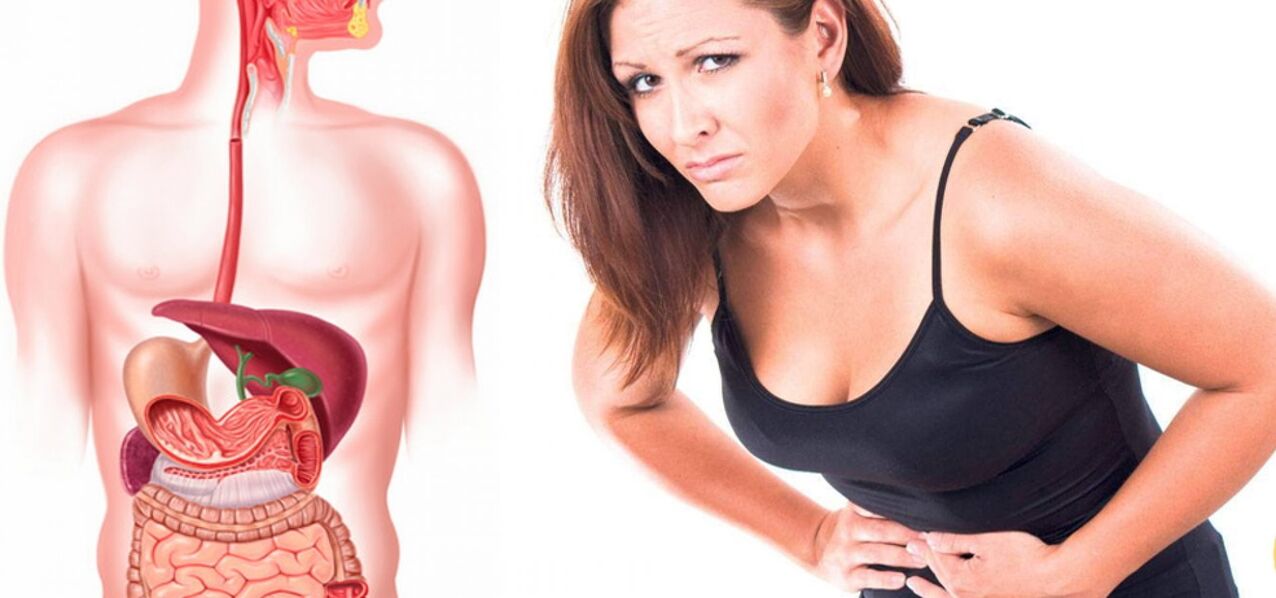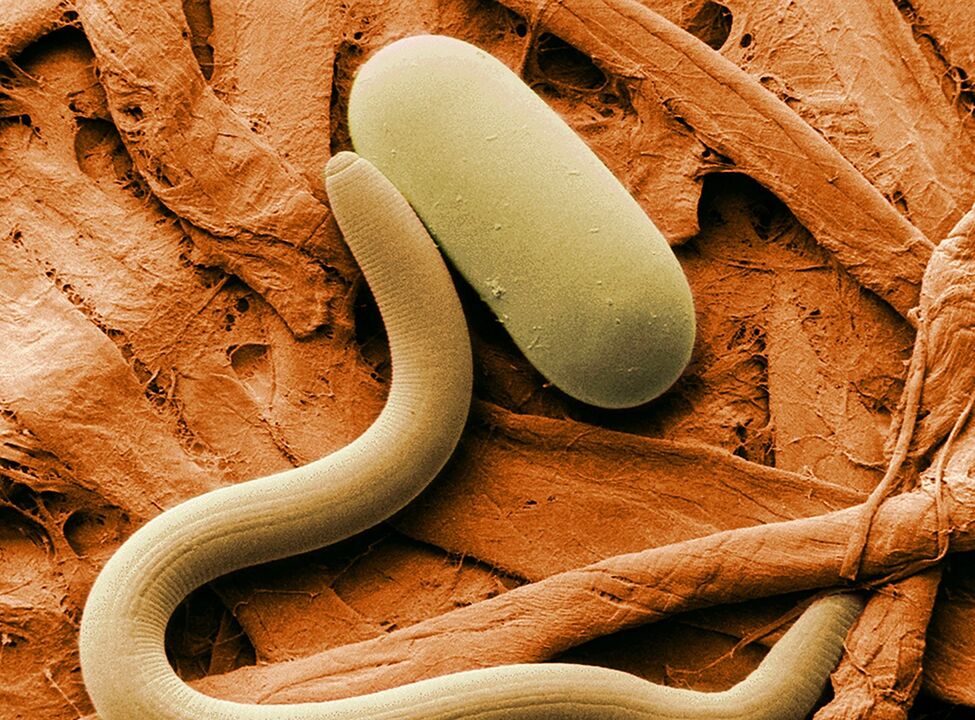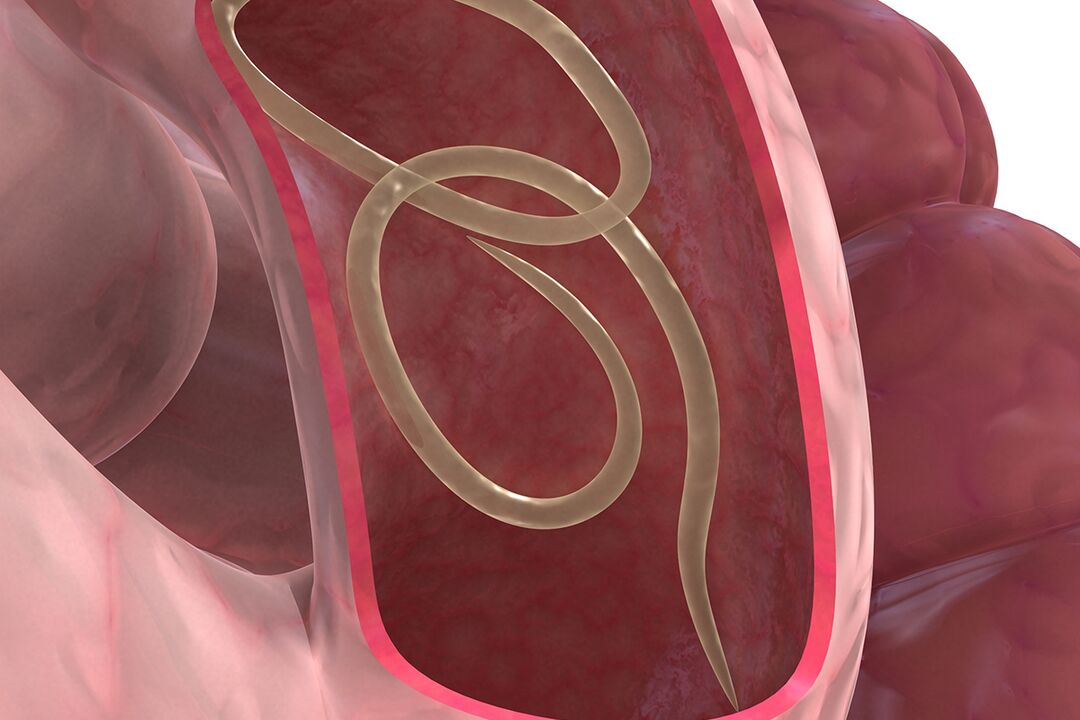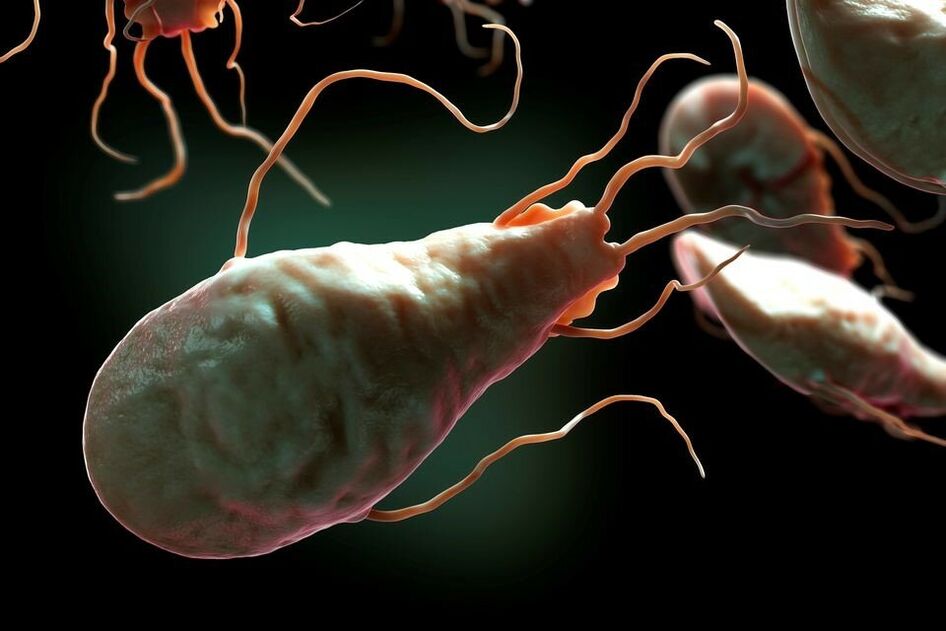Worms are representatives of lower worms that live in the human body. A disease caused by a person being infected with various types of worms is called helminthiasis. The disease is not uncommon and occurs in certain segments of the population. Children are susceptible to infection with pinworms, hunters - trichinella, fishermen and lovers of Japanese cuisine (raw fish in the form of sushi) suffer from diphyllobotriasis. Many diseases, paradoxically, can occur due to infection with helminthiasis in the human body. To date, the theory of the link between cancer and parasitic infections is one of the most relevant. In the presence of helminthiasis, the symptoms are not always visible, and yet patients with this disease are perceived as symptoms of other diseases if they experience any unpleasant and uncomfortable feelings. The patient has been treated for years for pancreatitis, gastritis or colitis, and there is no doubt that the cause of his illness is helminthiasis.
How the infection occurs
Worms cause a lot of trouble to humans

Infection with helminths occurs as follows:
- Through unwashed hands
- In contact with soil
- after insect bites
- Due to dirty hands
- When eating raw meat and fish
- After eating unwashed fruits and vegetables
- After contact with the animal
- After contact with infected people
Mature eggs of parasites can be found in soil, water, food (raw and poorly processed meat or fish). Rare cases of the disease occur due to insect bites. The mechanism of infection with helminthiasis is oral-fecal. Humans swallow parasite eggs with food and water. Contact-infection methods also occur. Occurs when hands are not washed thoroughly after contact with soil or sand.
Insufficiently washed vegetables and berries growing in the soil are also a source of worm infestation. Children playing with yards and pets are at risk for worm infestation. Pets roaming the streets can bring helminth eggs home. Flies and other insects can easily transfer helminth eggs by sitting on food after contact with animal feces. Surprisingly, human-to-human transmission is also possible. Here's how: A female pinworm can crawl through her intestines and lay an egg directly on her underwear, causing severe itching. A person sweeping an itchy area may come into contact with other toiletries and household items. These items pass into the hands of other family members, after which they become infected.
Waterborne infections are also possible. Many parasitic eggs easily fall into open water bodies and wells. It is extremely dangerous to drink unboiled well water.
Types of helminthiasis
Helminthiasis differs in the way it enters the human body:
- Biohelminths
- Geohelminths
- contagious
Biohelminths are transmitted to humans through contact with animals. Geohelminths can be transmitted through the soil. It is caused by contact with an infected person. The disease manifests itself differently depending on the method of infection, the number of worms, the degree of their adaptation in any human body.
Stages of helminthiasis

The most destructive effects on the body are produced not by adults, but by their larvae. Adults have already chosen a comfortable place for themselves in the human body, and the larvae pass through the organs and leave their lesions behind. The most common place for parasites is the gastrointestinal tract. Different types of parasites prefer different habitats. Thus, roundworms are located in the small intestine, and pinworms are located in the large intestine and lower parts of the small intestine. Helminthiasis according to the habitats of parasites:
- transparent
- piece
Translucent is located in the lumens of the genitals, and the tissues are located inside the tissues. Depending on their growth, parasites can change their habitat from a transparent form to a tissue form. Helminthiasis develops in two stages:
- sharp
- Chronic
The acute phase lasts from a week to a month, and the chronic phase lasts until treatment. The acute phase begins with the entry of the egg and continues with the maturation and growth of the parasite. The disease manifests itself in allergic reactions to a foreign organism. In the chronic stage of the disease, various reactions of the body occur. During this period, the parasite moves in the body to seek shelter. The disease is accompanied by disorders in the functioning of organs and systems in the human body. Parasites integrate the human body's immune system and consume substances necessary for growth and development. This leads to metabolic disorders, digestive disorders, and difficulty in assimilating vitamins and minerals.
In addition to this damage, parasites poison the body by dumping their waste into the human body, causing intestinal damage, reduced immunity, and bacterial infections. Parasites increase the risk of developing cancer. This is due to the negative impact on the immune system and the stimulation of the process of cell division. Often a patient is examined by many specialists who have found many diseases. And in this case, only one doctor, a parasitologist, can replace all the specialists.
Classification of helminths

roundworms are quite common
Types of worms in humans:
- flat worms
- round worms
Flatworms include:
- Trematodes (opisthorchias, schistosomes, paragonyms)
- Cestodes (broad band, tapeworm, exinococcus, alveococcus)
- Roundworms or nematodes:
- Pinworm
- Ascaris
- corn
- Trichinella
Such a classification of helminths is presented in the medical literature. To successfully solve a problem such as helminthiasis, it is necessary to find an in-depth description of the structure and life cycle of parasites.
Trematodes
Another name for trematodes is flukes. These parasites are flat, leaf-shaped or bipolar lanceolate. One pacifier serves to close in the mouth and the other in the peritoneum. All representatives of the fluke enter the body through the intermediate host. These parasites are mainly hermaphrodites.
Opisthorchias
This worm is a two-breasted worm up to 1. 3 cm long. Opisthorchiasis is a hermaphrodite, parasitizing in the liver, gallbladder and pancreas in humans and some predators (fox, dog, cat). Opisthorchiasis eggs leave the human or animal body in the feces. When they enter the reservoir, these eggs are absorbed by freshwater mollusks, in which the larvae emerge from the eggs and develop. The process of development and maturation of larvae lasts two months. The larvae then crawl out of the mollusk and penetrate under the skin to the carp. After six weeks, the larvae become full-fledged adult parasites. Opistorchis enters the body of an animal or human after eating infected fish. This worm can live in a living organism for up to 20 years. Symptoms of opisthorchiasis:
- Allergy
- Weakness
- headache
- Dizziness
- Depression
- Loss of consciousness
Damage to the body by opisthorchiasis:
- Poisoning by parasitic waste products
- Damage to liver tissue
- Gallbladder damage
- Disorders of bile flow
- Inflammation of the pancreas
- Secretory dysfunctions
- Decreased gastric motility
- Thickening of the walls of some organs, resulting in the formation of tumors.
The chronic course of the disease is characterized by the following:
- Weight after meals
- Pains
- Vomiting
- nausea
Habitats of opisthorchiasis in rivers rich in fish:
- Kame
- Dnepr
- Neman Delta
Prevention of infection: Do not eat raw fish to avoid infection with opisthorchiasis. Larvae die during heat treatment of products. Dried fish can be eaten only if it has been salted before. Also, larvae die when the fish is frozen for a long time.
Schistosomes

These parasites are of different species, resembling needles 0, 4-2, 6 cm long. Females are longer and larger than males, laying 3, 000 eggs a day. The method of reproduction, as in previous species of parasites, passes through freshwater mollusks. The larva enters the human body through the skin and mucous membranes while swimming in freshwater. It can also enter the body of a person who accidentally swallows water while swimming. One day after penetration, the larva becomes an adult and enters the peripheral vessels, through which it is directed to the lungs and venous vessels. There, the schistosome reaches sexual maturity.
The schistosome lays eggs in the intestines, mucous membranes and bladder. The eggs are then excreted in the urine or feces and begin to grow again. The schistosome lives in the human body for decades, causing damage and infecting new individuals. Problems with schistosomiasis are not caused by adults in the human body, but by their eggs. Only half of the eggs are eliminated from the body, and the rest accumulate in the organs. The eggs of this parasite contain spikes that damage human internal organs, and ulcers often form in infected people. The following symptoms are observed in patients with schistosomiasis:
- Appetite disorder
- Anemia
- Enlarged liver
- Altered spleen
- Decreased intestinal peristalsis
- Stomach pain
- constipation
- diarrhea
- Lose weight
- Intestinal bleeding
- Pain during urination
- allergies
- Weakness
When the genitourinary system is infected, patients experience the following:
- Menstrual irregularities and miscarriages in women
- Impotence and incomplete ejaculation in men
When eggs enter the central nervous system:
- Acute cerebral schistosomiasis
- Chronic brain injury
- Fatal outcome
Infected children have growth and developmental delays and decreased school performance. Prevention includes avoiding swimming and walking barefoot in tropical waters.
Paragonim

The paragonim is a 1 cm long lung rifle with an oval body and red thorns. This parasite multiplies in the lungs of animals and enters the human body by eating cancer, freshwater cancer. The parasite infects the respiratory system. Patients with paragonimiasis are characterized by allergic reactions and decreased immunity. Symptoms:
- Temperature rise
- Cough
- Removal of mucus from the lungs during coughing
- Shortness of breath
- In severe cases, sputum contains blood and parasitic eggs.
- A squeak is clearly heard in the patient's lungs.
- Prevention: Avoid the use of raw crayfish and crustaceans.
Cestodes
Representatives of cestodes are tapeworms of different lengths. Some parasites reach enormous sizes. These parasites have nipples, hooks or absorbent cracks at the beginning. These adaptations are necessary for the parasites to adhere to the intestinal wall. Cestodes affect the whole human body, are the most dangerous for children who quickly develop anemia.
Echinococcus
These parasites reach a length of 5 cm and are the causative agents of Exinococcus disease. The multi-chambered representative of this type of worm causes a disease such as alveococcosis. The disease is carried by cattle and domestic animals. When caring for these animals, the eggs of the parasite fall into the hands of humans from their fur. When they enter the human intestine, the parasites bite the mucous membrane. As the parasite matures, 4 compartments are formed, the last of which is filled with eggs. These branches come out and spread to the body, infecting it. The fourth section spreads the eggs all over the body.
An infected organ in a patient, for example, enlarges the liver. Sweeping may occur. An enlarged organ can even pass through the abdominal cavity. And it can cause severe sepsis and even death. Symptoms:
- Weakness
- Dizziness
- Allergic reactions to parasitic waste products.
Echinococcus affects:
- Brain
- Spinal cord
- Eyes
- thyroid gland
- Liver
- Lungs
- childhood
This parasite can cause tumors, including malignant ones. The most unpleasant thing is that the treatment of this disease is possible only by surgery. Prevention: personal hygiene in contact with animals.
Nematodes
These elongated, round or cylindrical worms are the most common parasites in children. These roundworms include pinworms, roundworms, hookworms.
Pinworms

These are small white worms. The length of the tooth is 1 cm, the length of the male is 0. 5 cm. These parasites have a pointed tail, so they were called pinworms. The habitat of pinworms is the human gut. The parasite has a pacifier at the front end, with the help of which the pinworm digs the intestines, and the sharp end hangs in the lumen and damages the walls. This disease is called enterobiosis. You can be infected by a person through dirty hands. Preschool children going to kindergarten have the disease. The symptom of pinworm infection is itching around the anus. More often itching is felt at night, when the female lays an egg, releasing a special substance. Symptoms:
- itching
- Diarrhea
- Stomach pain
- headache
- Anorexia
- Prevention
- hand washing
Round worm
These worms are the largest. The length of the tooth is up to 0. 5 m. The female lays 200, 000 eggs a year, regardless of the male. The mechanism of infection is fecal-oral. Ascaris eggs, along with unwashed vegetables and fruits, enter the human body through dirty hands. The larvae that enter the intestine are selected from the shell and penetrate the intestinal walls, migrating through the intestinal veins to the liver, from the hepatic veins to the heart, through the pulmonary arteries to the bronchi, and then to the intestines. trachea and mouth. Some of the larvae die in the open air, and the rest are swallowed back. Symptoms:
- nausea
- Vomiting
- Jaundice
- pancreatitis
- Often acute respiratory infections
- Bronchitis
- I have pneumonia
Prevention:
- hand washing
- Washing vegetables and fruits
- Personal hygiene
- Protect food from flies, cockroaches and other traffickers.
In conclusion, the cause of the disease is not always the bacteria and viruses that enter the body. Parasites can cause great harm to human health. In case of unclear symptoms, it is not necessary to rule out the penetration of the parasite into the body, the patient should consult a parasitologist.



























